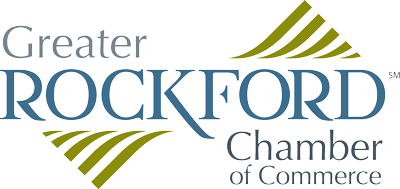Thriving innovation ecosystems
What Rockford can learn from other mid-sized cities
By TC Bell, EIGERlab
When people talk about innovation, the spotlight often shines on places like Silicon Valley, Austin, or Boston. But in recent years, mid-sized regional cities have quietly transformed themselves into thriving innovation hubs. Their stories hold powerful lessons for the Rockford Region as we look to the future.
My research led me to explore how Madison, Wisconsin; Grand Rapids, Michigan; and Greenville, South Carolina, (where I lived prior to Rockford) each built ecosystems that support entrepreneurs, attract talent, and fuel economic growth—and how Rockford can apply these lessons to build our own.
Madison, Wisconsin
Madison has leveraged the University of Wisconsin not only as an academic powerhouse but also as an economic engine. Research at UW accounts for nearly 5% of Wisconsin’s GDP, and commercialization flows through the Wisconsin Alumni Research Foundation (WARF). WARF reinvests patent royalties into faculty, infrastructure, and startups, creating a virtuous cycle of discovery and reinvestment.
The city has also invested in collaborative spaces like the Morgridge Institute for Research and the Wisconsin Institutes for Discovery. These aren’t just labs—they’re designed with “town centers” where scientists, entrepreneurs, and community members collide, sparking new ideas.
Madison’s ecosystem is also notable for its density and connectivity. The community is small enough that relationships matter. You can meet most of the city’s tech leaders in a single coffee shop on a busy day. That intimacy has fueled trust and collaboration, earning Madison a federal designation as a tech hub.
Grand Rapids, Michigan
Grand Rapids has reinvented itself through a bold bet on healthcare and life sciences. The Medical Mile—a concentration of world-class institutions including Corewell Health, Van Andel Institute, and Michigan State University’s (MSU) Secchia Center—has become the beating heart of the region’s innovation.
Supporting that anchor is The Bridge, a 20,000-square-foot incubator managed by the MSU Research Foundation. By housing biotech and med-tech startups alongside researchers and established players, it accelerates commercialization.
The ecosystem isn’t only about healthcare. Organizations like Start Garden and the Grand Rapids Center for Community Transformation provide resources and mentorship to entrepreneurs across industries. Meanwhile, the West Michigan Center for Art and Technology (WMCAT) blends creativity, workforce training, and community development, making sure the innovation wave is inclusive.
Greenville, South Carolina
Greenville has become one of the most supportive cities for startups in the Southeast. A recent survey even named it South Carolina’s most startup-friendly city.
The city’s strategy has been to weave together a dense support network of more than 60 entrepreneur support organizations (ESOs) under the StartupGVL brand. Anchors like the NEXT Innovation Center—a 60,000-square-foot startup hub—give entrepreneurs a home, while events and programming keep the energy flowing.
Capital access has also been key. Venture groups like VentureSouth and IDEA Fund Partners give local startups funding pathways, while state-level programs add another layer of support. Combined with Clemson University’s research strength and the region’s advanced manufacturing heritage, Greenville has built a fertile environment where ideas turn into thriving companies.
What Rockford can learn
Although each of these cities has taken a slightly different path, the common thread is clear: Ecosystems thrive when they are intentional and focused. Each city aligned its institutions, cultivated collaboration, and invested in both talent and infrastructure.
For Rockford, the path forward means leveraging our strengths—advanced manufacturing, aerospace, healthcare, and the arts—while building the connective tissue between schools, corporations, entrepreneurs, and community organizations.
If we want to attract and retain the next generation of talent, we need to tell our story boldly, invest in shared spaces and support structures, and celebrate the innovators already shaping our future.
The views expressed are those of the author(s) and do not necessarily represent those of the Greater Rockford Chamber of Commerce.
